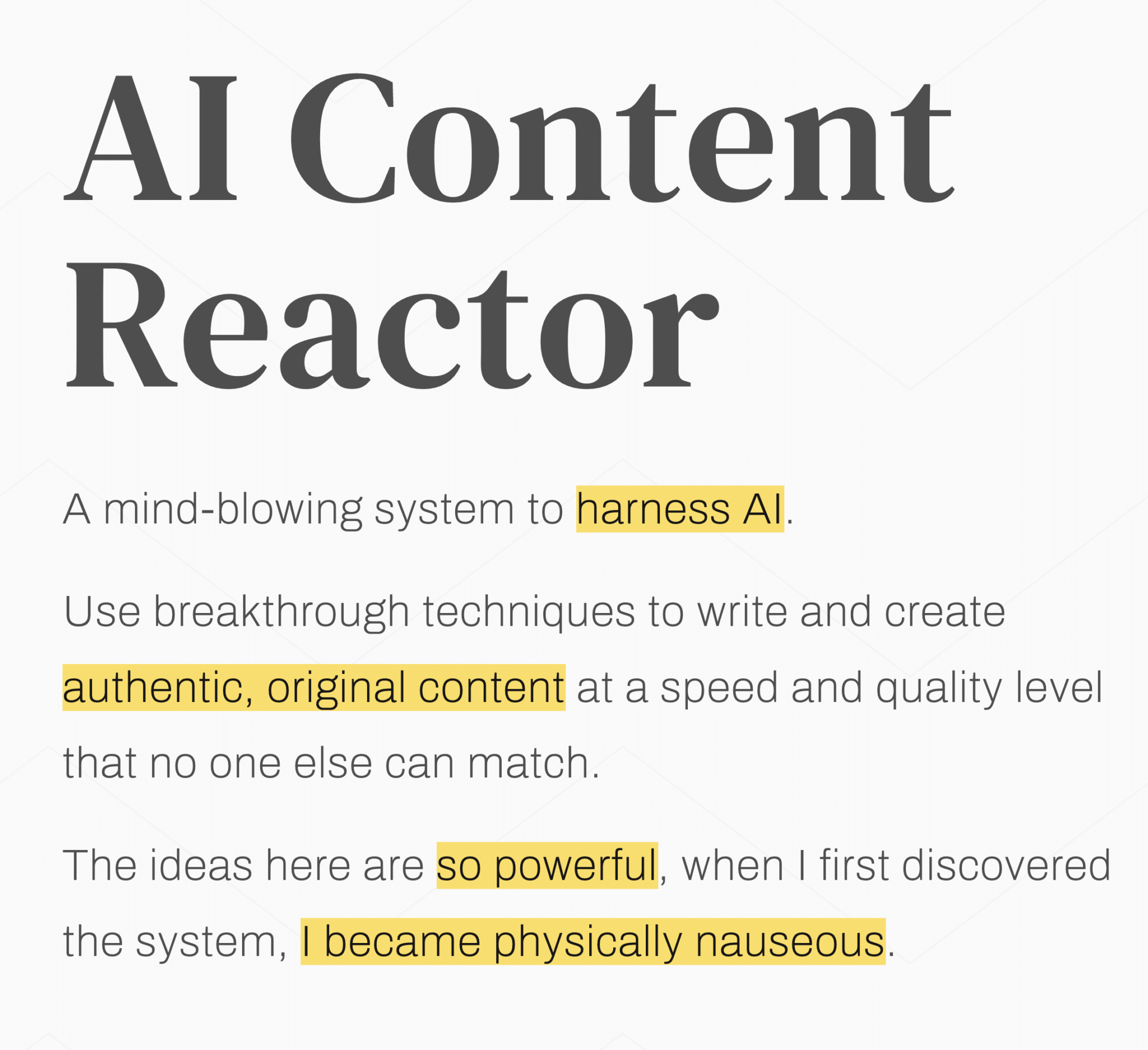Index bloat is a common technical SEO issue. While not quite an “SEO killer,” it’s like carrying too much baggage on a road trip—it slows you down.
What’s that you say? My SEO performance can be affected?
Yes! And worse yet – bloat can sneak up on you before you even realize it’s happening. It’s like Fright Night in January. I know, Halloween is past, but ugly is ugly no matter what time of year it is.
In this guide, we’ll explore what index bloat is and why it matters. Then, I’ll share a few tips for crawl budget optimization: the steps you can take to declutter your website for better search engine rankings and user experience.
Step away from Michael Myers reruns, and let’s dig in.
Table of contents
What Is index bloat?
Index bloat happens when search engines index too many pages on your website.
What? Is there really any such thing as too many indexed pages?
Yes – when you include pages that hold zero value for users or SEO. These unnecessary pages can hog your resources and consume your crawl budget, making it harder for search engines to prioritize the most important content.
How you normally find bloat:
- You do everything you know you’re supposed to do. You’ve done the thing, SEO best practices, content optimization, and followed everything you’ve learned to rank higher.
- Your strategies don’t perform like you expect them to. Despite your efforts, you find yourself frowning at your rankings, checking and double-checking (and double, double checking). Traffic stays out of your reach, and you’re just…. Frustrated.
- You do a technical audit. Realizing something must be wrong, you dig deeper into your site with 10 industry blogs open to help you uncover potential issues.
- BAM – you find out about index bloat. The technical SEO audit reveals an overwhelming number of unnecessary or low-value pages indexed, providing clarity on the source of your performance problems.
Why is index bloat a problem?
Index bloat can have significant consequences for your website’s performance:
It wastes your crawl budget.
Search engine crawlers have a finite crawl budget. They only crawl so much of your site at a time. Without proper crawl budget management, search engine bots can get sidetracked in your website’s junkyard instead of focusing on high-priority content. This can delay or even prevent the crawling and indexing of priority content, impacting your site’s visibility in search results.
It dilutes your authority.
Search engines distribute a site’s link equity (also known as “link juice”) across all its indexed pages. When a site has a high number of low-value pages, your link equity spreads thinner than cheap peanut butter, leaving high-value pages without the attention they deserve. Their authority is spread thinner, reducing their value.
It provides a poor user experience.
Index bloat can result in irrelevant, outdated, or redundant pages appearing in search engine results. This can confuse users, lead them to pages with low value, and harm their perception of your brand. A cluttered index also makes it harder for users to find the content they are looking for, damaging credibility and trust.
Index bloat has several common sources.
Index bloat can come from several sources, many of which go unnoticed until they start impacting your site’s SEO. Understanding where your unmentionables are hiding is the key to knowing how to get rid of them. Here are some of the most common sources:
- E-commerce sites: Filtered product pages and endless variations can easily clog the index. For example, color or size filters for a product might generate unique URLs for each combination, overwhelming search engines with redundant pages. This issue is common in e-commerce platforms where the focus on user personalization inadvertently leads to an over-indexing problem.
- Blog sites: Over-indexing tags, categories, and archive pages are common reasons for thin, low-quality content. Blogs often create tag or category pages automatically, but these pages usually don’t offer much. Properly consolidating tags or restricting their indexation can address this challenge. Category pages can be beneficial if treated like pillar pages, or topic hubs.
- Internal search result pages: Dynamically generated search result pages might be great for users, but they’re pointless for search engines. These pages are typically created for navigation purposes but end up being indexed unnecessarily, confusing search engines and diluting crawl budgets.
- Testing or staging pages: Test or staging pages accidentally made public can become indexed, exposing incomplete or irrelevant content to search engines and users alike. These pages not only clutter your index but also risk presenting unpolished material to your audience.
- Duplicate content: Pages like printer-friendly versions or product variations can lead to unnecessary duplication in search engine indexes. Proper use of canonical tags or merging duplicate pages can resolve this issue.
- Stale content: Outdated blog posts or expired event pages clutter your index and provide irrelevant information to users and search engines. Regular content audits can help identify and remove these pages, ensuring your site remains relevant and up-to-date.
Crawl budget optimization helps you find and fix your website’s indexing issues.
So how do you fix index bloat? The answer is a strategy I mentioned at the beginning: crawl budget optimization. Index bloat can become a big deal if left alone or mishandled. However, you can optimize your crawl budget for peak performance.
Here’s how to find your crawl and index messes, and clean them up.
Step 1: Audit your indexed pages.
Use Google Search Console to see what’s currently indexed.
In Google Search Console, navigate to the “Pages” section under “Indexing” to view a detailed list of all the URLs Google has indexed from your site. Pay close attention to pages marked as “Excluded” or “Crawled – currently not indexed” to understand how search engines view your content. Look for patterns, such as duplicate pages, thin content, or unnecessary URL parameters, and identify low-value pages that shouldn’t be indexed.
Use Screaming Frog to crawl your site and find problematic URLs.
Screaming Frog gives you an in-depth crawl of your entire website, identifying duplicate pages, thin content, broken links, and missing meta tags. It also highlights redirect chains and server errors that could contribute to index bloat. SF’s filtering options will help you isolate pages that might not provide value; for example, pages with low word counts or are blocked by robots.txt. By analyzing this data, you can pinpoint specific issues and prioritize fixes to optimize your site’s index.
Step 2: Consolidate and clean up your content.
Merge duplicate content into a single authoritative page.
Duplicate content, such as similar product descriptions or multiple blog posts covering the same topic, confuses search engines and splits traffic between pages. Combining this content into one comprehensive and well-optimized page ensures that search engines and users focus on the most valuable version.
Remove irrelevant or outdated content.
Pages like old event announcements, expired promotions, or irrelevant landing pages clutter your website index without offering any real value. Regularly auditing and removing these pages can improve user experience, and make your high-value pages stand out more effectively.
Step 3: Optimize your site’s index.
Add no-index tags to low-value pages like internal search results.
This directive tells search engines not to index these pages, ensuring they don’t dilute the quality of your site’s index. Pages such as search results, filtering options, or confirmation screens rarely add value to users outside of specific site interactions.
Use robots.txt to block crawlers from unnecessary sections.
For example, you can prevent bots from crawling backend directories, development areas, or other non-public content. This ensures your crawl budget is directed to high-value areas of your site, improving the efficiency of search engine indexing.
Use canonical tags to point duplicates to the preferred version.
Canonical tags guide search engines to the crème de la crème. They help consolidate ranking signals for duplicate or near-duplicate pages by specifying which version of a page should be indexed. For instance, if you have similar content available through multiple URLs, a canonical tag can make sure only one authoritative page is indexed.
Use proper hreflang tags for multinational sites.
Hreflang tags are essential for guiding search engines to display the correct version of your website based on a user’s language and location. They help prevent duplicate content issues across different regions and ensure that users see region-specific content, such as pricing, currency, or localized services. For instance, if your website has both UK and US versions, hreflang tags will ensure users in the UK see the British site and not the US one, enhancing both user experience and search engine optimization for multinational businesses.
Step 4: Improve your crawl efficiency.
Submit a lean XML sitemap containing only high-value pages.
A lean sitemap makes sure you showcase your important pages. While it doesn’t keep search engines from indexing your low-value pages, it does improve your crawl efficiency by boosting the visibility of priority content.
Regularly update your sitemap to reflect changes.
Keeping your sitemap up to date is critical to maintaining an accurate representation of your website. Anytime you add or remove pages, make sure these updates are reflected in your XML sitemap to prevent search engines from crawling outdated links or missing newly added content.
Your crawl budget optimization tools to help you tackle index bloat:
- Google Search Console & Screaming Frog: See Step 1: Audit your indexed pages.
- Ahrefs/SEMrush: Both tools are excellent for assessing page value through traffic and backlinks. Identify pages with minimal traffic or few backlinks, as these are likely candidates for pruning. You can also use the tools to look at your site’s overall structure and highlight potential areas of bloat caused by irrelevant or underperforming pages.
- Robots.txt Tester: Use this tool to make sure your robots.txt file is properly configured to block search engine bots from crawling low-value sections of your site. For instance, block URLs related to internal search results, filters, or test environments to conserve your crawl budget. Verify changes using the tester to make sure they’re implemented correctly.
Be proactive by following best practices for a lean, optimized website.
Index bloat can be a silent threat to your website’s SEO, but implementing best practices can reduce the chances of it sneaking up on you. Here are key practices to reduce unnecessary indexed pages and improve overall performance:
- Develop a Clear Site Structure: Create a logical, hierarchical site structure that limits the creation of unnecessary pages. Each page should serve a clear purpose and offer value to users and search engines. Avoid excessive subcategories, redundant URLs, and unneeded navigational paths. Read our Beginner’s Guide to Website Architecture.
- Set Rules for Dynamic Content: Dynamic pages, such as filtered e-commerce product pages or internal search results, can quickly lead to index bloat. Implement rules to block these pages from being indexed using noindex meta tags or robots.txt. (Be careful doing this; you don’t want to deindex your site accidentally.) You should also make sure parameter handling settings in Google Search Console are properly configured to manage dynamic URLs.
- Schedule Regular Audits: Review your site’s indexed pages using tools like Google Search Console or Screaming Frog. Identify low-value pages, outdated content, or pages that contribute little to your SEO goals. Create an audit checklist with your thresholds so audit variables remain consistent. Regular audits allow you to proactively manage and prune unnecessary content before it becomes an issue.
- Collaborate with Developers: Work closely with your development team to make sure they properly implement meta tags, canonical links, and hreflang attributes for multilingual sites. Developers can also assist in creating scripts to automate the blocking or removal of problematic pages, making sure your site remains optimized.
- Leverage XML Sitemaps: Create and maintain a lean XML sitemap that highlights your high-value pages. Update the sitemap regularly to reflect changes in your site’s structure, ensuring search engines focus on the most relevant and useful pages.
- Monitor Robots.txt Directives: Use a properly configured robots.txt file to block crawlers from accessing low-priority sections of your website, such as staging environments, test pages, or user-generated spam. Verify these directives using tools like the Robots.txt Tester to ensure effectiveness.
- Optimize Internal Linking: Internal links should point to key pages, emphasizing their importance to search engines. Avoid linking to low-value pages or creating excessive navigation paths that could encourage over-indexation.
- Consolidate Similar Content: For pages with overlapping or duplicate content, consolidate them into a single, authoritative resource. Use canonical tags to guide search engines to the preferred version and prevent dilution of ranking signals.
- Train Your Team: Educate your content creators, marketers, and developers on best practices for content creation and site development. This step is easily overlooked, and is one of the best steps to keep a clean site. The more informed your team is, the more new pages and content additions align with your goals.
Wrapping it up…
Index bloat is less of an “SEO issue” than a “syndrome” of combined page quality issues. If your site has 10,000 indexed pages but only 3,000 showing in the backend, you’re wasting valuable resources. This happens more often than you might think, especially with ecommerce sites. If search engine crawlers only have so much budget, wouldn’t you rather they spent it on your quality pages?
With technical SEO and crawl budget optimization, you can make sure they do.
Need a hand with the heavy lifting? Reach out to Level343 for tailored SEO solutions.




































2 Responses
Thanks , but i think another missing criteria here is number of backlinks that low quality pages have , it might be helpful to keep, update or redirect them to keep link juice
Hi, i think many SEO experts miss this issue. It is important to remember that Google’s resources are limited. What do you think about the ‘Indexed, though blocked by robots.txt’ warning in Search Console?